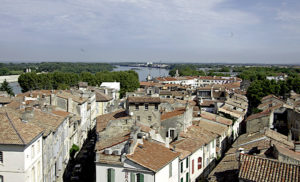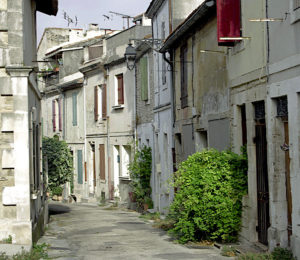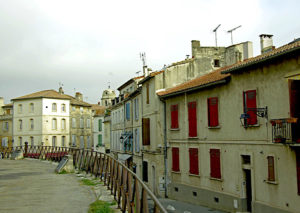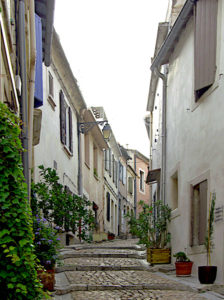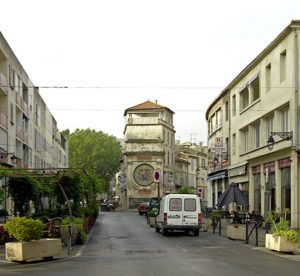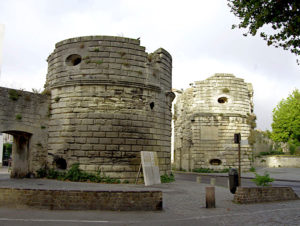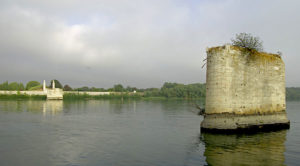Arles is the lowest bridging point of the Rhone. We berthed next to the remains of one of the bridges which was destroyed during the Second World War. I decided to skip the guided tour and armed with a “map”:https://walkli.com/routes/Arles,%20France set off to explore by myself. The centre of Arles is compact and easily explored on foot. There are a series of information boards in French scattered around the city.
Arles was an important Roman City and still has a lot of Roman remains, including the “amphitheatre”:https://www.silvertraveladvisor.com/review/attraction/205451 which is one of the best preserved in the world and the “theatre.”:https://www.silvertraveladvisor.com/review/attraction/205452 “The Church of St Trophime”:https://www.silvertraveladvisor.com/travel-product/attraction/205496-church-of-st-trophime-arles is built on the site of a C4th Basilica.
Arles became famous at the end of the C19th when Van Gogh settled here for two years, immortalising the pale stone houses and red tiled roof in his pictures. The “Van Goch connection”:https://www.vangoghgallery.com/in_his_steps/arles.html attracts tourists and the Visitor centre has a leaflet with a walking tour of the main sites associated with him.
Arles was a walled city and is still entered through the gateway on Rue Cavalerie. Just down from gateway is the Fontaine A Pichot with its brightly coloured mosaic. This dates from the end of the C19th and was built by Pierre-Amédée Pichot to commemorate the friendship between his father and the painter Paul Balze. The enamel medallion on faience tiles was the work of Baize and was bought by Pichot and gifted to the city of Arles. The city council were unable to find anywhere suitable for it, so Pichot ended up buying a house to display it on.
Remains of the walls can be seen behind Eglise St Blaise and the convent of St Césaire, where they stand above the busy Boulevard Emile Combes.
Arles retains its medieval street plan with the amphitheatre at its centre. A network of streets and narrow alleyways radiate from Rond Point des Arènes. It repays exploring on foot as there are many unexpected surprises, like the old Convent of St Césaire:https://www.silvertraveladvisor.com/review/attraction/205448 hidden behind an imnpressive gateway.
Eglise Notre Dame de la Major with its very plain facade, is a C12th church built on the highest point of the city, but was locked when I visited. The “Church of St Trophime”:https://www.silvertraveladvisor.com/travel-product/attraction/205496-church-of-st-trophime-arles was open and well worth visiting , along with the cloisters.
It was a very warm morning and I didn’t have time to see everything before needing to head back to the boat. What I did see I enjoyed.
